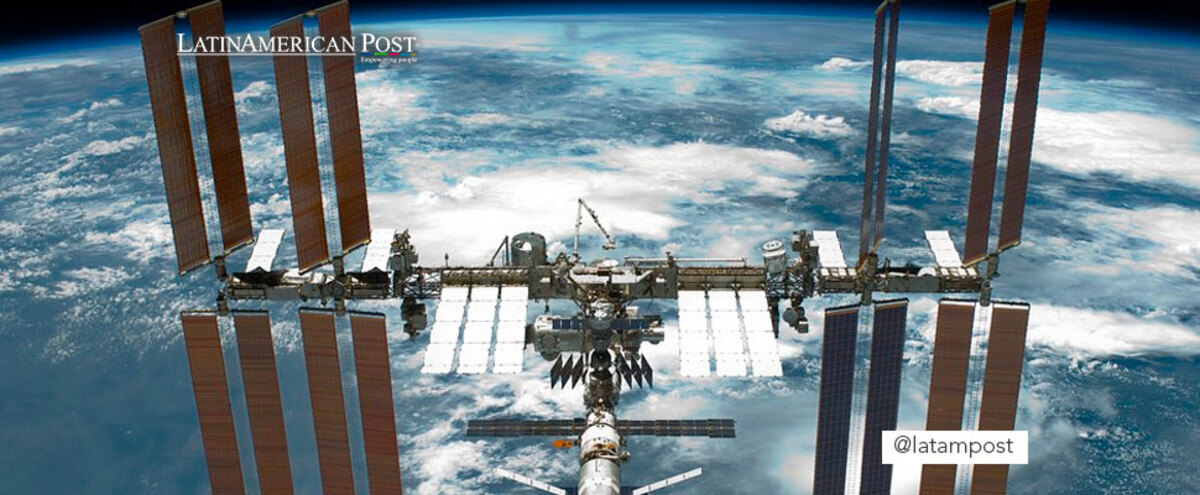Solar Energy in Space, ¿Dream or Possible Reality?
Solar energy captured in space is an innovative solution for the fight against climate change that seems to be a closer reality every time.

Photo: Pixabay
LatinAmerican Post | Brandon Martínez Salazar
Listen to this article
Leer en español: Energía solar en el espacio ¿sueño o posible realidad?
Solar energy, due to its clean and sustainable nature, has become one of the most popular energy sources in the world in recent years. Despite its multiple benefits, there is a great challenge in its efficient use, since the amount of solar energy that can be collected in a single place on Earth is limited due to factors such as surface availability and climate.
That is why scientists and energy experts have explored the possibility of harnessing solar energy generated in space and transmitting it to Earth for use, which could represent an innovative and highly efficient solution to meet the growing demand for energy around the world.
Is it Possible to Generate Solar Energy from Space?
Harvesting solar power in space has long been a debated idea, but recent technological advances in solar panels and wireless power transmission are bringing it closer to a viable reality. Building an orbiting solar farm with panels larger than a square kilometer generating a gigawatt of power is necessary to make solar power in space a reality. China plans to put a megawatt-scale demonstration unit into orbit in 2028 and another into geosynchronous orbit in 2030.
On the other hand, the University of Warwick is conducting research on a new type of metal halide perovskite material for harvesting solar energy in space and reducing reliance on fossil fuels. Using nuclear magnetic resonance, the project seeks to understand the atomic structure of solar cells and improve their durability in different atmospheric conditions. The objective is to diversify sustainable energy sources and contribute to the fight against climate change.
We recommend you read: Surgeries and medical care in space? NASA studies advance
On the other hand, the European Space Agency (ESA) is also working on a project to develop technologies that allow the capture of solar energy in space. Said project is called Solaris. "Through SOLARIS, Europe will expand the technological state of the art in a diverse set of key technologies relevant to applications both on Earth and in space, such as high-efficiency solar cells, wireless power transmission and in-orbit robotic assembly," points out the ESA on its website.
However, there is a lot of research going on in this regard in different universities and countries. "A prototype built by researchers at the California Institute of Technology (Caltech) in Pasadena should begin in-orbit experiments this month," Nature Magazine noted.
What Kind of Material do you Intend to Collect Solar Energy in Space?
Research on metal halide perovskite solar cells is highly relevant as it can have a major impact on the way solar energy is harvested and on reducing reliance on fossil fuels. Unlike silicon solar cells, perovskite solar cells have greater flexibility, making them applicable in contexts not previously considered, such as indoor light harvesting and on highly flexible substrates such as foils and fabrics. In addition, it has been shown that these solar cells can overcome the limitations of silicon solar cells, such as their relatively greater thickness, the brittleness of silicon, and sensitivity to cosmic radiation.
In recent years, significant investment has been made in the research and development of perovskite solar cells, and a fast increase in their efficiency has been achieved. These advances are expected to lead to decreased production costs and increased adoption in the industry.
What are the Obstacles to Solar Power in Space?
Solar power in space poses significant challenges that need to be addressed before it becomes a reality. Assembling solar farms in space requires advanced technology and robotic systems that do not exist yet. In addition, special solar cells are needed to be resistant to radiation and capable of operating effectively under extreme conditions.
Transmission of power back to Earth also raises concerns about potential negative effects on health and the environment. The cost of launching the components and keeping the solar farm in place is also a major hurdle that can only be overcome if solar in space is deployed on a large scale. As technology evolves, these challenges may be resolved over time.




